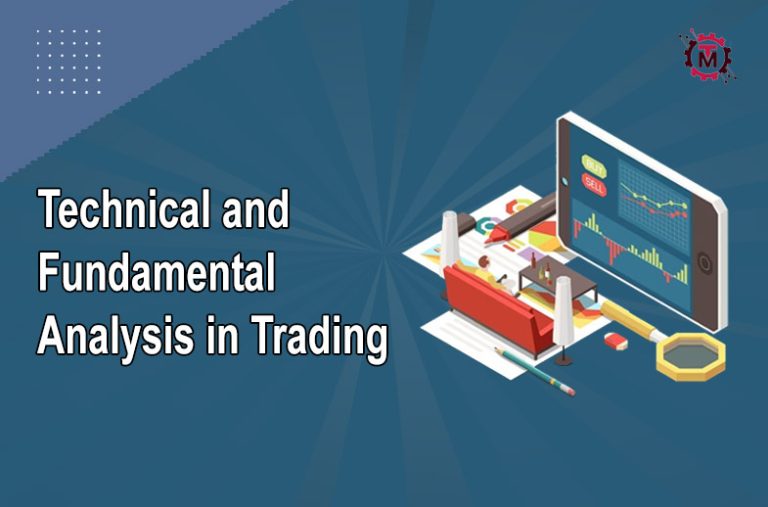When a newbie comes into the world of trading, he really wants to know everything all at once. Once they have learned how to do trading and the basic steps to start trading, they think that they are master of it. However, they don’t know the importance of marketing analysis and how psychological management works, but they should do. In this guide, I will discuss the use of technical and fundamental analysis in trading decisions and how new traders can use them.
Two Main Approaches to Market Analysis
Technical Analysis: Technical traders use chart information and base their predictions on past trading data. Fundamental Analysis: Fundamental traders, on the other hand, use fundamental information such as interest rate decisions, trade balance, inflation data, etc., to predict future asset prices.
There are traders that solely use technical analysis in their predictions and nothing else, there are traders that only depend on fundamental analysis, and there are hybrid traders who use a combination of both methods simultaneously.
There’s no clear answer to this question of which method of market analysis is superior. There are successful technical traders, and if you ask them to switch to fundamental analysis, their trading results will be terrible. And vice versa, there are fundamental traders who cannot profit from technical analysis. Every trader is different and has a unique personality. The key to success in trading is finding out what works best for you and mastering it. There are a million ways to make money in the market. For beginner traders, it’s best to use both methods as they are still in their development phase.
How Purely Technical Traders Make Trading Decisions
As already mentioned, purely technical traders disregard the fundamental data and solely focus on technicals, such as charts, indicators, and backtesting data. To avoid trading what they do not understand, technical traders do not trade before and during significant economic announcements or political events. They wait for the high, unpredictable volatility to calm and look for trading opportunities after the storm is gone. Many technical traders are quite cynical about fundamental trading and believe that all the information that’s needed to trade profitably is coded in the past market performance. The main drawback of using only technical data is that market conditions can change, and profitable trading systems can become unprofitable. Technical traders do poorly at the start when market conditions radically change.
How Purely Fundamental Traders Make Trading Decisions
Purely fundamental traders ignore charts completely. The only time they use charts is to find entries in the market. Instead, analysis is based on fundamental information. Traders can easily find economic calendars online to prepare accordingly for upcoming events. In addition, most financial brokers provide their clients with economic calendars. In addition, there are many brokers providing various promotions such as XM. You can check XM’s no-deposit bonus, which was reviewed here.
When it comes to fundamental analysis of the FX market, there are various factors to consider. Let’s check some of the most important ones:
Interest Rate Decisions
Central banks play a pivotal role in economic management by establishing and adjusting interest rates to influence inflation, with the aim of maintaining it at a stable and low level. When central banks increase interest rates, the currency is likely to get stronger. Higher rates mean that it will be more costly for individuals and businesses to take loans, and therefore, less money will circulate in the economy. A lower money supply increases demand and, therefore, its value. In addition, investors from all over the world closely monitor interest rate decisions and make trading decisions accordingly, which also impacts the value of currency. On the other hand, lowering rates is bad for the local currency’s value, as it becomes more accessible for individuals.
Inflation Rates
Inflation data is often presented as CPI (Consumer price index). This index measures the inflation rate. Higher-than-expected inflation might trigger the central bank to increase rates; therefore, it’s an important metric that needs to be included in fundamental analysis.
Trade Balance
Trade balance can also impact the local currency. Typically a positive balance is good for the currency, and a negative is bad. The balance is calculated by exports minus imports.

Economic Indicators
There are various important economic indicators that help measure the strength and health of certain economies, such as GDP (Growth Domestic Product), building permits, unemployment rate, etc. In addition, certain indexes such as S&P 500, UK100, GER40, etc. can also be good indicators for measuring economic health, as indices follow the basket of stocks from certain economies and industries.
Political events and economic policies can also have an impact on financial instruments.
Government Debt and the International Situation
As for the stock traders, they use more company oriented parameters to predict future price movements, such as analyzing financial statements, reading earnings reports and listening to conference calls, analyzing the company and its management, analyzing competitors and customers, and more.
How Hybrid Traders Make Trading Decisions
Hybrid traders use both fundamental and technical analysis simultaneously. Although there are always risks of conducting so much research that a trader is unable to place an order, there are hybrid traders who develop simple trading strategies based on the opportunities that both methods offer. A hybrid method of analysis is preferable for most beginners as they are still uncertain about which trading approach is optimal for them.
Key takeaways
To sum everything up, there are three main approaches when it comes to market analysis: technical, fundamental and hybrid. Technical analysts base their predictions on past market information such as charts, and technical indicators. Fundamental traders use economic calendars to base their decisions on economic and political factors such as interest rate decisions, trade deficit, inflation, etc. And hybrid traders use both methods. It’s best for beginners to try both methods and learn how to conduct them properly to find out what works best for them.







